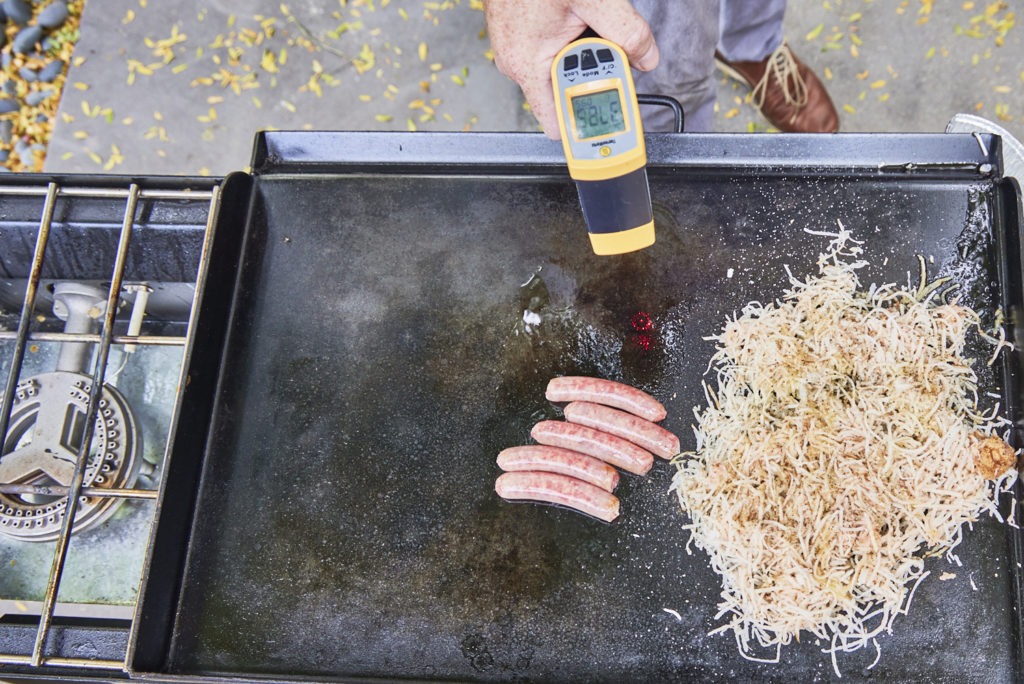How to Clean a Griddle Scraper Blade: Tips & Techniques
Written By James Morgan
If you're a barbecue enthusiast, you know the importance of maintaining your cooking tools, especially your griddle scraper blade. A clean scraper ensures that your griddle remains in pristine condition, ready to deliver those perfect sear marks and delicious flavors. But how to clean a griddle scraper blade effectively? Let's dive into the secrets and techniques that will keep your scraper in top shape.

The Importance of a Clean Scraper Blade
Before we get into the cleaning techniques, it's essential to understand why a clean scraper blade is crucial. Over time, grease, food particles, and grime can build up on the blade, affecting its efficiency and potentially transferring unwanted flavors to your food. Moreover, a dirty blade can lead to rust, diminishing its lifespan.
Regular cleaning not only ensures optimal performance but also preserves the integrity of your griddle cooking. Whether you're flipping burgers or searing steaks, a clean scraper blade is your best ally in achieving culinary perfection.
Step-by-Step Guide to Cleaning Your Griddle Scraper Blade
1. Gather Your Cleaning Supplies
Before starting, ensure you have all the necessary supplies. You'll need:
- Warm soapy water
- A soft sponge or cloth
- A non-abrasive scrubber
- White vinegar
- A clean towel
Having these tools at hand will make the cleaning process efficient and hassle-free.
2. Initial Rinse
Begin by rinsing the scraper blade under warm water. This step will help remove loose debris and grease, making the following cleaning steps more effective.
3. Scrubbing the Blade
Using a soft sponge or cloth, apply warm soapy water to the blade. Gently scrub the surface, focusing on areas with stubborn grime. Avoid using abrasive materials that might scratch the blade.
For tougher stains, consider using a non-abrasive scrubber. This tool will help break down the residue without damaging the blade.
4. White Vinegar Solution
If there are still stubborn spots, a white vinegar solution can be a game-changer. Mix equal parts of water and white vinegar in a container. Soak the scraper blade in the solution for about 15 minutes. The vinegar's acidity will help dissolve any remaining grime.
After soaking, rinse the blade thoroughly with warm water and dry it with a clean towel to prevent rust.
Maintenance Tips for Your Griddle Scraper Blade
Now that your scraper blade is spotless, let's talk about maintaining its cleanliness. Regular maintenance will reduce the frequency of deep cleaning sessions:
- After each use, rinse the blade immediately to prevent food particles from hardening.
- Store the blade in a dry place to prevent moisture buildup and rust.
- Consider using a blade guard or sheath to protect the blade's edge.
Why Proper Tool Maintenance Matters
For those passionate about grilling, maintaining your tools is as essential as selecting the perfect cut of meat. A well-maintained griddle scraper blade not only ensures better cooking results but also extends the lifespan of your equipment. Remember, a dull or dirty blade can sabotage your grilling efforts, leaving unsatisfactory results.
For more tips on griddle maintenance, check out these essential griddle tools and how to use them effectively.

Exploring More Griddle Accessories
While the scraper blade is a critical tool, there are other accessories that can enhance your grilling experience. From spatulas to oil bottles, each tool plays a unique role in ensuring a successful barbecue session. To explore more about these tools, visit this comprehensive guide on griddle accessories.
FAQs
1. How often should I clean my griddle scraper blade?
It's best to clean the scraper blade after each use to prevent food particles and grease from hardening.
2. Can I use a dishwasher to clean my scraper blade?
While some scraper blades are dishwasher-safe, it's recommended to check the manufacturer's instructions. Hand washing is often safer to preserve the blade's integrity.
3. What should I do if my scraper blade starts to rust?
If you notice rust, use a gentle scrubber with white vinegar to remove it. Ensure the blade is thoroughly dried after cleaning to prevent further rusting.
This article contains affiliate links. We may earn a commission at no extra cost to you.



